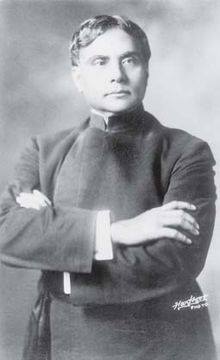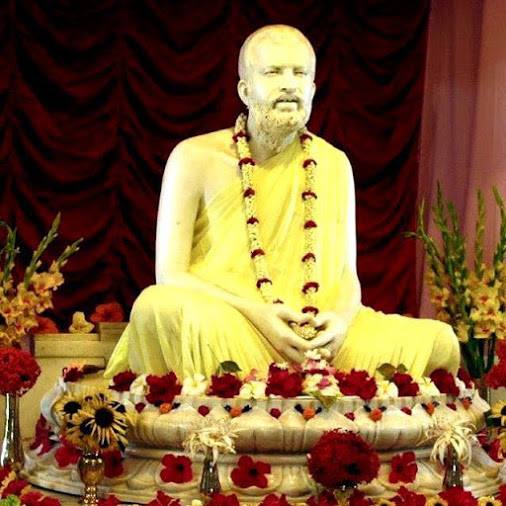Let us try to understand the word ‘Dharmam’ in its true meaning. This word is of the Sanskrit language : Swami Chinmayananda
Monday, September 07, 2020. 05:45. AM.
“Dharyate anena iti dharmah”. That which supports is dharmam. That which supports, maintains, nourishes, harmonises, brings together, and unites the inert and the sentient, the individual and the society, nation and the world is dharma. The very substratum of the entire creations is called dharma. The common factor, the essence of countless imaginable creation is dharma. The other names synonymous in meaning in the Vedas are Brahman, Atman, Paramatman etc. Therefore one of the names of Maha Vishnu in the Vishnusahasranaam (thousand names of Vishnu) is Dharmam. The word Dharma has a wide range of meanings and hence called Parma (Supreme) Dharmam. Let us delve further into this word.
###There are three aspects to life :-
# l)The experiencer of the world called the ‘jeeva’ or the individual,
##2) the experienced world or jagat. The individual could not have created himself or another individual or the world. Neither did the world create itself or the individual. The finite cannot create the infinite, nor the inert the sentient.
###3) Hence one has to postulate the creator of the two – the Iswara. The Jeeva Jagat Ishwara are in essence one.
Their essential relation or substratum or the Truth behind them is called Param Dharma. These three, Jeeva- Jagat-Ishwara, also have a transactional relationship
The Ishwara is the creator, the world and thejeevas, the created. The jeeva is the enjoyer, the world the enjoyed. The individual is the part and finite, the Ishwara, the whole and the infinite. Knowledge of this transactional relationship is also called ‘Dharma’.
The individal performs actions in the world and reaps results thereof. So the Law of Action- Karma Siddhanta and it’s discussions is also ‘dharma’. By actions one gains various fields of experiences, material objects (job relations etc), or other world (heaven, hell etc) or various other bodies (plant, animal etc.). Hence this knowledge is also called Dharma.
An action is measured not only by the outer performance, but also by the intention behind it. If one serves a rich man with an intention of gaining wealth, it is not called selfless service. These intentions depend on the values of life that we possess. Hence discussion on values is also dharma. The universal values are also samanya or maanav dharma as they are common to humanity under all circumstances, in all places and at all times. It is what makes us humane. They are truth(satya), non-injury(ahimsa), self-control(brahmacharya), etc. The application of these may differaccording to circumstances but that does not detract their value or change them. For example, when, in order to save a man, his cancerous hand may have to be amputatted, it does not mean that the doctor has no value for non-injury.
For the harmonious life of the individual and society certain laws are made which are given out as do’d and dont’s. The knowledge of these laws, as the do’s and dont’s is also dharma. It is called Vidhi-nishedhatmak dharma.
Depending on the age, place, position, sex etc of the person, he has certain duties toperform. Non-performance of the same would cause harm to himself and others. For eg. the King’s duty is to rule with justice, protect his subjects etc. The students duty is to study, teachers’s to teach whole heartedly etc. The knowledge of these duties is also dharma (Vishesha dharma).
Furthermore, for gaining spiritual unfoldment, special actions are prescribed called sadhanas or upaasanaa. They are also dharma. For gaining special worldly or divine powere (siddhis), certain actions are indicated. They too are dharma. Rites and rituals too are dharma.
Hence we see the wide range of meaning encompassed by the word Dharma. The scriptures that talk of one or more aspects of dharma are called Dharma Shastras. The Vedas are the oldest dharma shastras and give knowledge of the entire dharma. The smritis ( Manu Smriti, (Geeta), Itihaas (Mahabharat, Ramamyana), Puranas (Bhagwat etc) also talk about the entire dharma.
Performance of one aspect of dharma cannot make us totally dharmic, for example daily visit to a temple is only one aspect of dharma as are values etc. Only a self realised man can be totally dharmic as all his actions spring from the realisation of Supreme Dharma, the Paramatman.
Supreme Dharma as already discussed, is the knowledge of the Truth or Substratum of the Jeeva – Jagat – Ishwara. One may call the truth by any name which indicates its true meaning. The Truth by its very nature is one. It must logically be free from time, space and causation, therefore birthless, deathless and eternal. Hence the Supreme Dharma is called Sanatana. It manifests with creation and gets absorbed at the time of dissolution eg the law of gravity manifests with the matter governed by the law and would go into unmanifest condition along with the said matter. Hence Sanatana Dharma is the only dharma of creation and all beings in it. This may sound fanatic but one should try and look on it with an unprejudiced mind. Sanatana Dharma is now callled Hindu Dharma. The word Hindu was given by the persians to the people who lived on the banks of the river Sindhu.
End.
===================================================================






Comments
Post a Comment